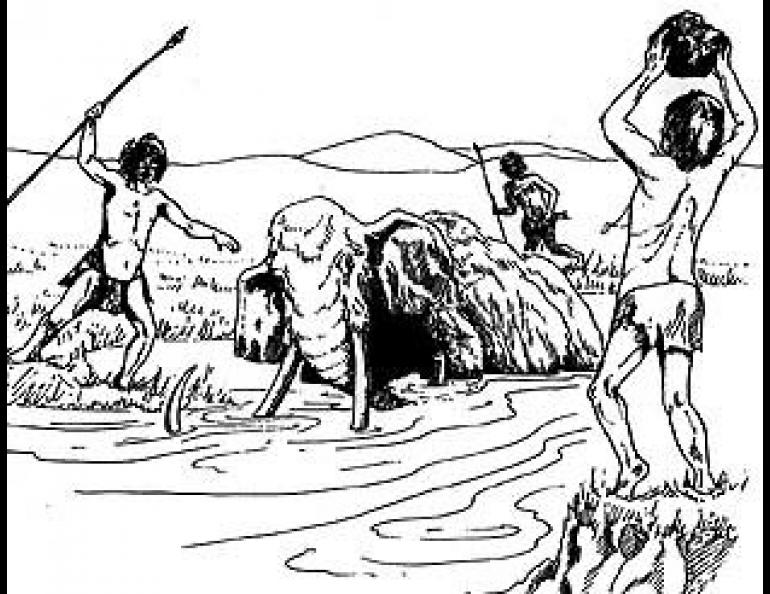
Our State Fossil: Did Early Man Wipe it Out?
The woolly mammoth was recently named by the Alaska State Legislature as the state's official fossil. That would probably provide slight consolation to the great long-gone animals, especially if they could know of a recent study showing that our ancestors probably wiped them out in the first place.
Over the past 15 million years, the Bering land bridge has been repeatedly opened during ice ages when the sea level dropped. Over this causeway, the giant herbivores passed from Asia to enjoy the good life on the North American continent. About 600,000 years ago, the woolly mammoth crossed over and joined the mastodon and the host of other exotic ice age mammals that are now extinct.
Then, some disaster struck and 10,000 years ago, the last one disappeared. Paleontologists and archeologists have long been aware that the demise of the mammoths and mastodons occurred about 1,000 years after Paleo Indians arrived in North America by the same route taken by the animals. The scientists strongly suspected that there was a connection, but there was no strong evidence. Now there is.
Examples of bones of dismembered, presumably butchered, mastodons and mammoths abound. The bones bear clear marks made by stone tools. Still, this does not point to their being hunted to extinction. But David Fisher and Paul Koch of the University of Michigan have been following a line of investigation that strongly suggests that this was, indeed, the case.
By analyzing the layers of seasonal laminations that build up each year on mammoth and mastodon tusks and molars, Fisher and Koch were able to identify the time of year that an animal died to within an accuracy of two weeks to a month. They found that the animals that died in the fall had been butchered, and that those that died in the spring had died of natural causes.
Having survived the winter, there was no reason for healthy animals to die in the fall when they were fat and conditions were good. This was probably the hunting season (as it generally is today). The healthy animals, well-fed on the summer's bounty, provided crucial fat the humans needed for metabolizing protein during the winter months. It was probably at this time that the hunters amassed their winter stores. The animals that died in the spring were probably sick and stressed after the hard winter.
There is another reason that giant mammals are exceptionally vulnerable to hunting pressure--they replenish their stock very slowly. Modern elephants do not bear their first young until age 10 or 12, and their gestation period is nearly two years. Fisher believes that, once the human population began to increase rapidly, extinction may have taken place in only 100 to 1000 years.





